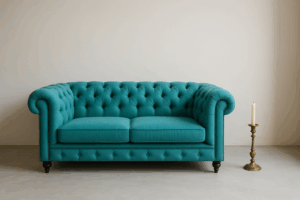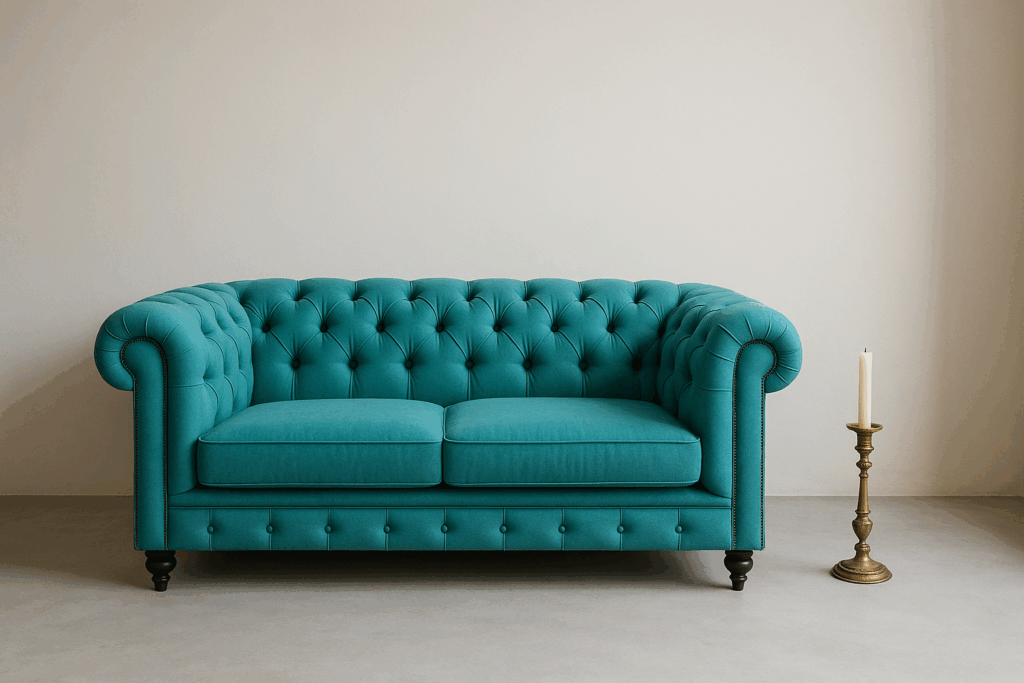Chesterfield Wiki
Official wiki of Chesterfield information
5 Unexpected Color Palettes That Make a Chesterfield Shine


A Chesterfield sofa is a timeless statement piece, but its bold silhouette can present decorating challenges. The secret to success lies in harmonizing its classic elegance with contemporary elements. This guide reveals sophisticated strategies for integrating a Chesterfield sofa into modern minimalist spaces, achieving a look that’s both serene and refined.
Contents
Embracing Negative Space
The core principle of minimalist design—”less is more”—applies perfectly to furniture arrangement. A Chesterfield sofa, with its distinctive deep buttoning and rolled arms, functions as a sculptural element that demands breathing room. Position it as the room’s centerpiece with ample circulation space, preventing visual clutter while allowing the sofa’s exquisite craftsmanship and details to command attention as functional art.
- Actionable Tip: Maintain at least 18 inches of clearance between the sofa and other furniture pieces, such as coffee tables, to preserve an open, airy atmosphere.
- Common Mistake: Positioning the sofa against a visually busy wall filled with artwork and shelving. Instead, float it away from walls or place it against a clean, unadorned surface to enhance its prominence.
Curating a Neutral Palette
Color selection becomes paramount when bridging classic Chesterfield aesthetics with minimalist sensibilities. While vibrant velvet options can make a statement, the most sophisticated approach begins with neutral foundations. Opt for charcoal grey, beige, or black leather upholstery—colors that ground the space without overwhelming it. Build your room’s color story around the sofa using layered tones of white, grey, and beige on walls, flooring, and major furnishings, then introduce subtle texture and interest through plush rugs, linen cushions, or a single striking artwork.
- Pro Tip: Select Chesterfields crafted from matte leather or wool-blend fabrics to avoid reflective surfaces that disrupt the tranquil ambiance of minimalist interiors.
- Scaling Strategy: Employ tonal variations within a single color family and incorporate diverse textures—such as sleek metallic lighting alongside chunky knit throws—to create depth without visual noise.
Selecting Complementary Furnishings
Your choice of accompanying furniture ultimately determines the success of your minimalist aesthetic. Counterbalance the sofa’s traditional curves with pieces featuring clean, contemporary lines. Rather than ornate wooden coffee tables, select designs with simple silhouettes—think slender rectangular oak tables or circular glass-topped options. Seek out furnishings with slender metal legs to maintain visual lightness. For accessories, embrace restraint: a single statement potted plant like a fiddle-leaf fig or an architecturally significant vase provides the perfect organic counterpoint to the sofa’s strong presence without creating clutter.
- How to Choose: Prioritize side tables and shelving with open frameworks that permit light and sightlines to travel through the space, maintaining an expansive feel.
- Beginner Tool: Utilize mood board applications to experiment with various minimalist furniture combinations alongside your Chesterfield image before making purchasing decisions.
Conclusion
- Prioritize spatial planning to let the Chesterfield’s design command attention as the focal point.
- Begin with neutral-toned upholstery and develop a layered, textured color scheme around it.
- Harmonize the sofa’s traditional form with modern, minimalist furniture and carefully curated accessories.
- Mastering this balance transforms your living area into a sanctuary that exudes both elegance and sophistication.
Read more at Chesterfield Minimalist Design Guide
Living Room Furniture | Chesterfield Sofas | Chesterfield Armchairs | Modern Classic Interiors | Choosing Sofa Colors | Living Room Layouts | Powered by CCombox
